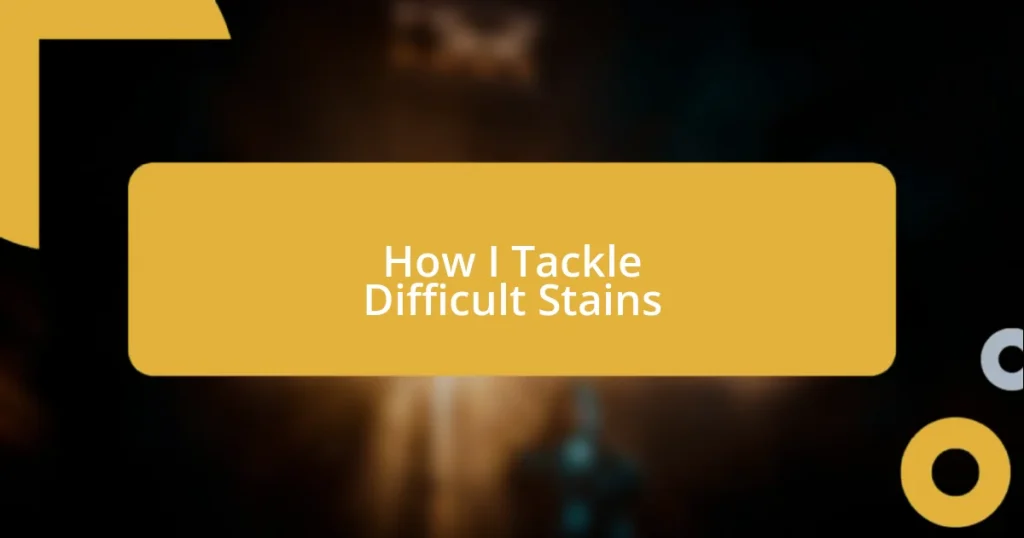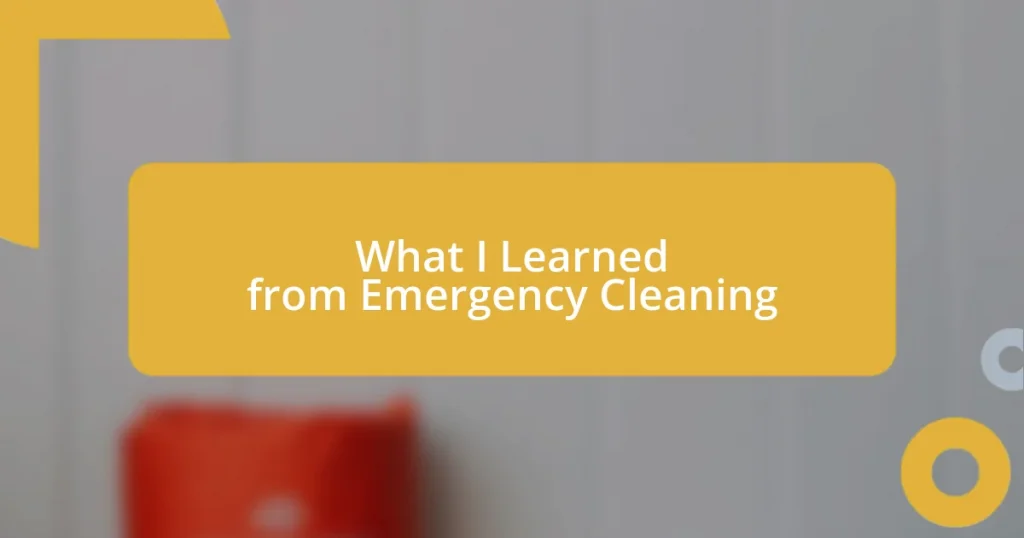Key takeaways:
- Understanding the type of stain (oil-based, water-based, protein) is essential for effective removal strategies.
- Preparation, including gathering the right tools and having a positive mindset, significantly enhances the stain removal process.
- When DIY methods fail, or the material is delicate, seeking professional help can save valuable items from further damage.
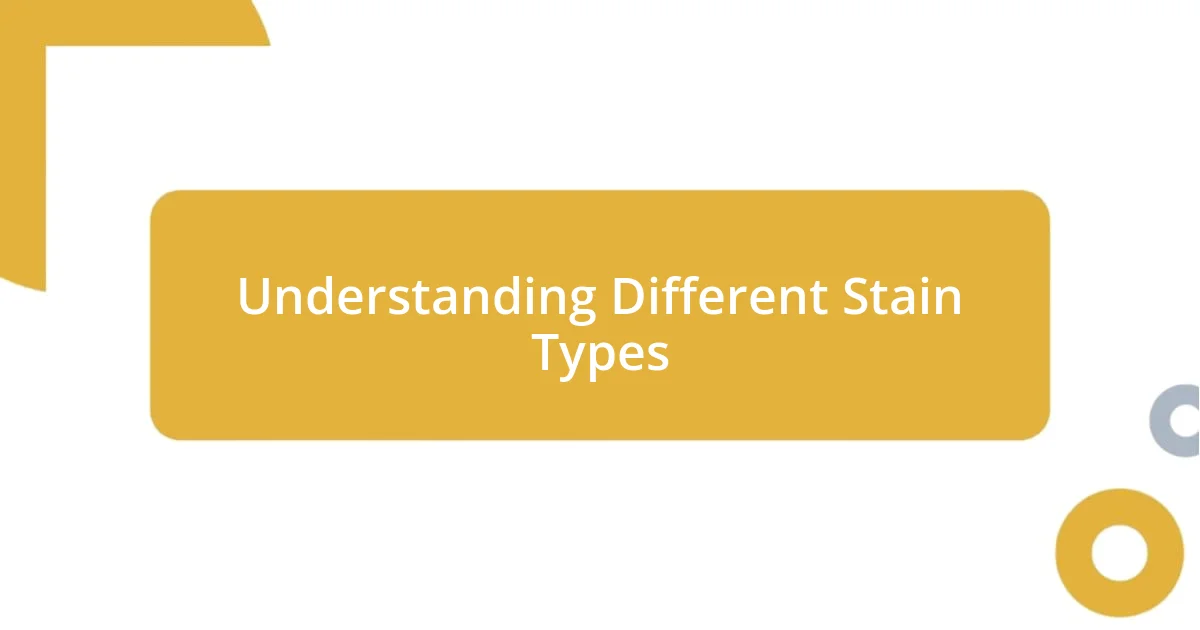
Understanding Different Stain Types
When it comes to tackling difficult stains, understanding the type of stain is crucial. For instance, oil-based stains, like those from salad dressings or motor oil, often require specific solvents to break them down. I still remember the panic of spilled olive oil on my favorite tablecloth and how realizing the right approach made all the difference.
Water-based stains, such as coffee or fruit juices, are another beast entirely. They’re often easier to treat, but not always. I once had a guest spill red wine, and I was amazed at how a simple cold water rinse helped lift most of the stain immediately. Isn’t it fascinating how some stains can be resolved quickly with the right technique?
Then there’s the stubborn category of protein stains—think blood or egg. These require a gentle touch and sometimes a bit of enzymatic power, like those found in specialized detergents. I’ll never forget the challenge of a baby food mishap on my son’s cute onesie. It was a messy situation that taught me the importance of acting fast and knowing what I was dealing with. How often do we overlook the simple details that can lead to successful stain removal?
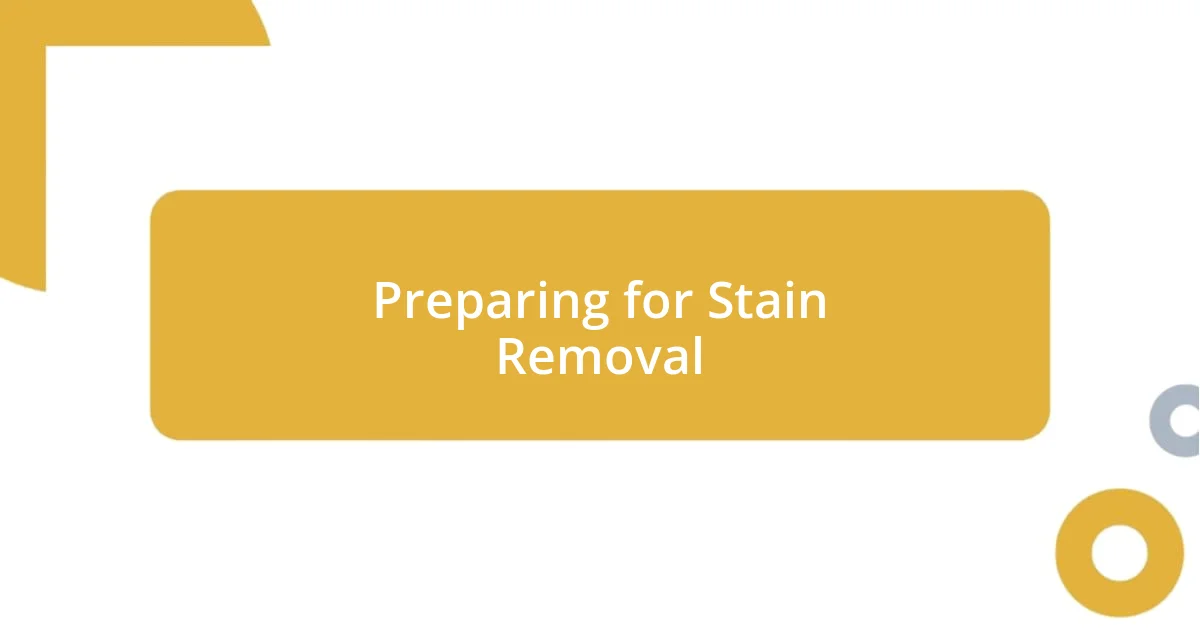
Preparing for Stain Removal
Before diving into stain removal, it’s essential to gather your materials and set the stage. When I first faced a tough ink stain on a cherished pair of jeans, I learned that having the right tools at hand made a significant difference. Over time, I’ve honed a routine that not only prepares me but also calms any initial frustration.
Here’s a quick checklist to consider before getting started:
- Identify the stain and its type (oil, water-based, protein).
- Gather necessary supplies: blotting paper, clean cloths, water, and appropriate stain remover.
- Test any products on a hidden area to avoid damaging the fabric.
- Wear gloves if needed, especially with harsh chemicals.
- Stay patient and keep a positive mindset, remembering my early mistakes helped shape my techniques.
Remember, preparation isn’t just about materials; it’s also about mindset. The first time I tackled a grease spot, I was overwhelmed, but I learned that taking a breath and having a clear plan makes the process much smoother. You’ll be amazed at how a little preparation can save you from unnecessary stress!
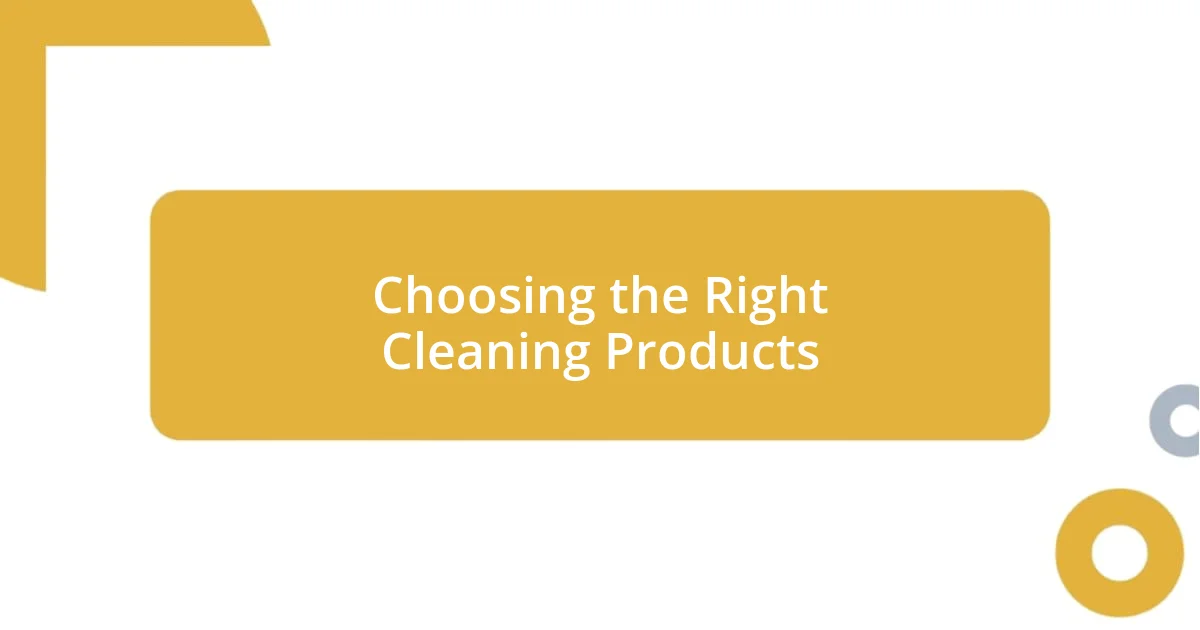
Choosing the Right Cleaning Products
Choosing the right cleaning products is crucial to successfully tackling difficult stains. I’ve tried countless products, but I’ve found that reading labels and understanding the components can save a lot of headaches. For instance, I once picked up a stain remover with a fragrance that was so strong it nearly knocked me out! It’s often more effective to choose a product that lists active enzymes, as they’re designed specifically to break down protein stains.
When I had a stubborn berry stain on my favorite summer dress, I quickly learned the value of color-safe bleach. I was so apprehensive about using any bleach, but a friend’s enthusiastic reassurance made me take the plunge. I carefully diluted the bleach and soon watched in amazement as the stain faded away without compromising the dress’s vibrant color. How uplifting it is to see progress with the right choice!
There’s also a world of eco-friendly options that shouldn’t be overlooked. I vividly recall a day I ran out of my usual stain remover and instead reached for a vinegar and baking soda mix. Not only did it work wonders on a greasy kitchen mishap, but it also gave me a sense of satisfaction knowing I was being kinder to the environment. Exploring alternatives can sometimes lead to unexpected and delightful results.
| Stain Type | Recommended Products |
|---|---|
| Oil-Based | Solvent-based cleaners, Dish soap, Rubbing alcohol |
| Water-Based | Enzymatic cleaners, Vinegar, Baking soda |
| Protein | Enzymatic detergents, Cold water, Hydrogen peroxide |
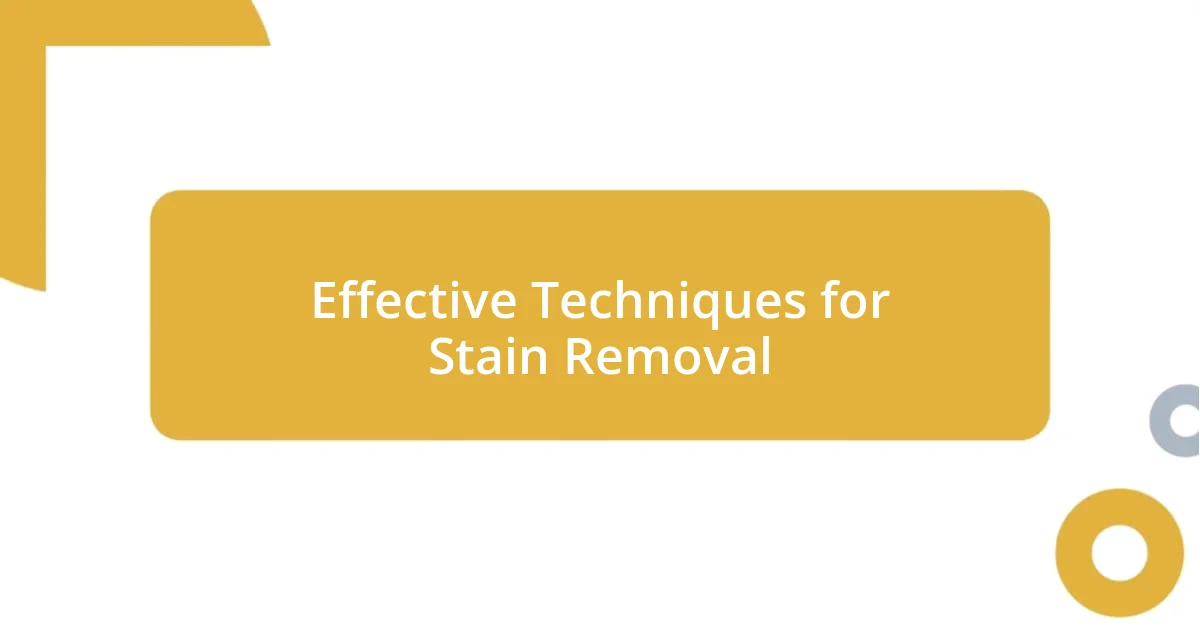
Effective Techniques for Stain Removal
I’ve learned that the method of attack can make all the difference when it comes to stain removal. When I encountered a chocolate smudge on my favorite white shirt, I instinctively reached for cold water. That moment taught me a valuable lesson: always work with a stain, not against it. Blotting the stain gently rather than rubbing it hastily allowed me to lift the chocolate without spreading it further. Isn’t it fascinating how a simple technique can turn a disaster into a success?
Then there was the time I dealt with red wine on my carpet during a small dinner party. I immediately doused the area with salt, which absorbs the wine effectively. I could almost feel my heart race as I watched the salt draw out the color. It struck me then that the key to effective stain removal often lies in thinking quickly and creatively. Have you ever found yourself in a pinch and had to improvise? Sometimes, those unexpected solutions end up being the most rewarding.
Lastly, I make it a point to follow up every cleaning attempt with a rinse and blot to ensure no residue remains. I remember feeling anxious after trying a new stain remover that I wasn’t sure would work. Rinsing it off felt like unwrapping a gift; seeing the item clear of the stain was a relief that brought a smile to my face. This simple follow-up step guarantees that my efforts pay off, and it’s a crucial habit I now instill every time I tackle a tough stain. Why overlook such an important step when the payoff is so gratifying?
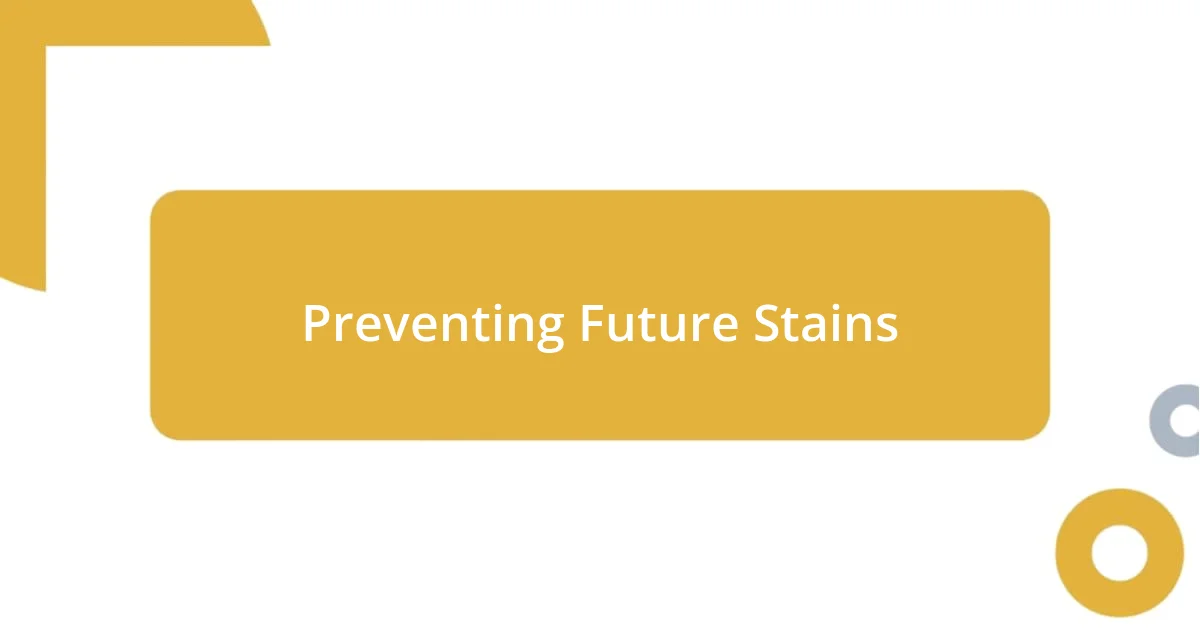
Preventing Future Stains
One of the best ways to prevent future stains is to be proactive about spills and messes. I remember hosting a barbecue last summer when a full plate of grilled ribs tipped over. In that moment, I made it a habit to keep cleaning wipes nearby. After cleaning up, I felt this sense of control over the situation, knowing I had the tools to address the unexpected. Isn’t it comforting to know that a little preparation can save you from a major cleaning effort later?
Another tip I’ve learned is to treat fabrics with stain-resistant sprays, especially if you’re often in messy environments. I once bought a new white tablecloth and immediately treated it with a fabric protector. You would not believe the relief I felt when a guest accidentally spilled red sauce all over it, only for the stain to bead up and wipe away easily! There’s something incredibly rewarding about taking those extra steps to safeguard your belongings—it’s like giving yourself a little insurance policy for unexpected moments.
Finally, keeping an eye on your wardrobe can make a world of difference. I often rotate lighter colors into my wardrobe during the warmer months, and as a result, I steer clear of drenching my work clothes in coffee or lunch spills. I’ve had friends come to me, amazed at my simple trick of wearing darker clothes on chaotic days. Have you ever thought about how your color choices can impact your day? Knowing how to dress purposefully can truly minimize potential staining, and that’s a small change with a big impact.
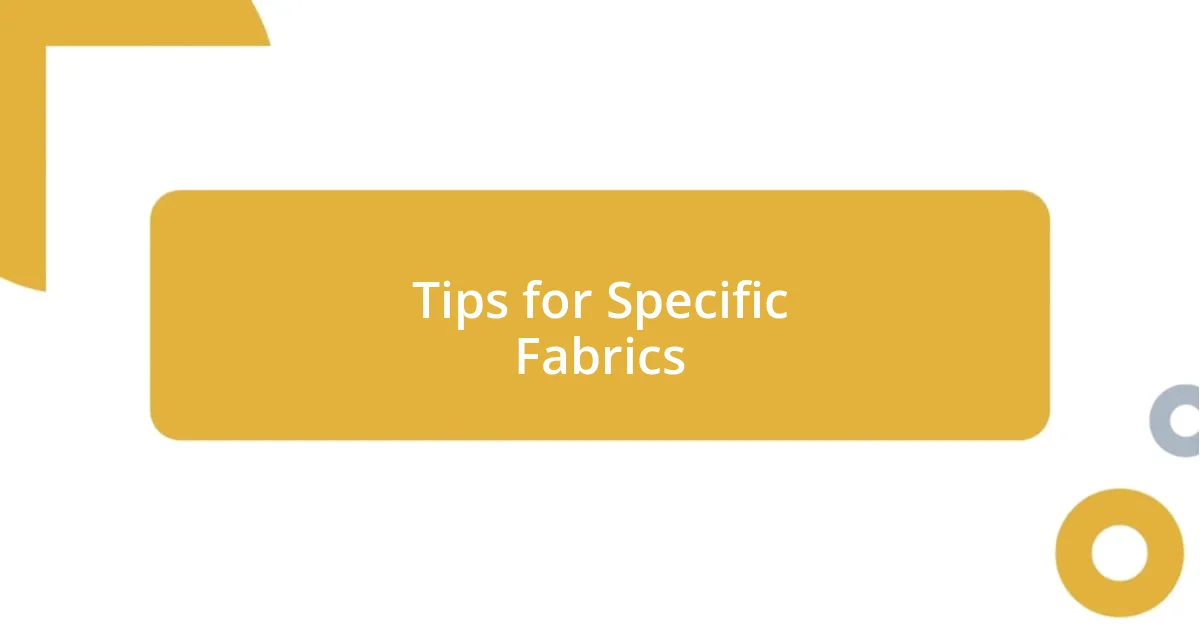
Tips for Specific Fabrics
When it comes to delicate fabrics like silk, I’ve learned the hard way that gentleness is key. I once spilled a bit of perfume on my favorite silk blouse during a rush to get ready for a night out. Instead of panicking, I immediately blotted it with a clean cloth and a mix of cold water and mild detergent. The relief I felt after watching the stain lift was priceless. Have you ever felt that glimmer of hope in a seemingly hopeless scenario? It just reinforced for me that a delicate touch and swift action make all the difference.
For upholstery, such as my beloved velvet sofa, I’ve discovered that using a soft brush can work wonders. I recall a day when a little chocolate from my dessert found its way onto the fabric. Instead of furiously scrubbing, I took a deep breath and gently brushed in the direction of the fibers to avoid spreading the stain. Isn’t it incredible how a little patience can transform what could be a disaster into a manageable situation? The chocolate came out, and I was left feeling proud of my careful approach.
Lastly, when tackling denim stains, I swear by vinegar. I had this unforgettable moment when I got barbecue sauce on my favorite pair of jeans. In my attempt to save them, I mixed equal parts vinegar and water in a spray bottle, spritzed the stain lightly, and then blotted. Watching that stubborn sauce lift away felt like winning a small victory. Have you ever had that rush of triumph when a stain disappears? It’s moments like these that turn cleaning from a chore into an empowering experience.
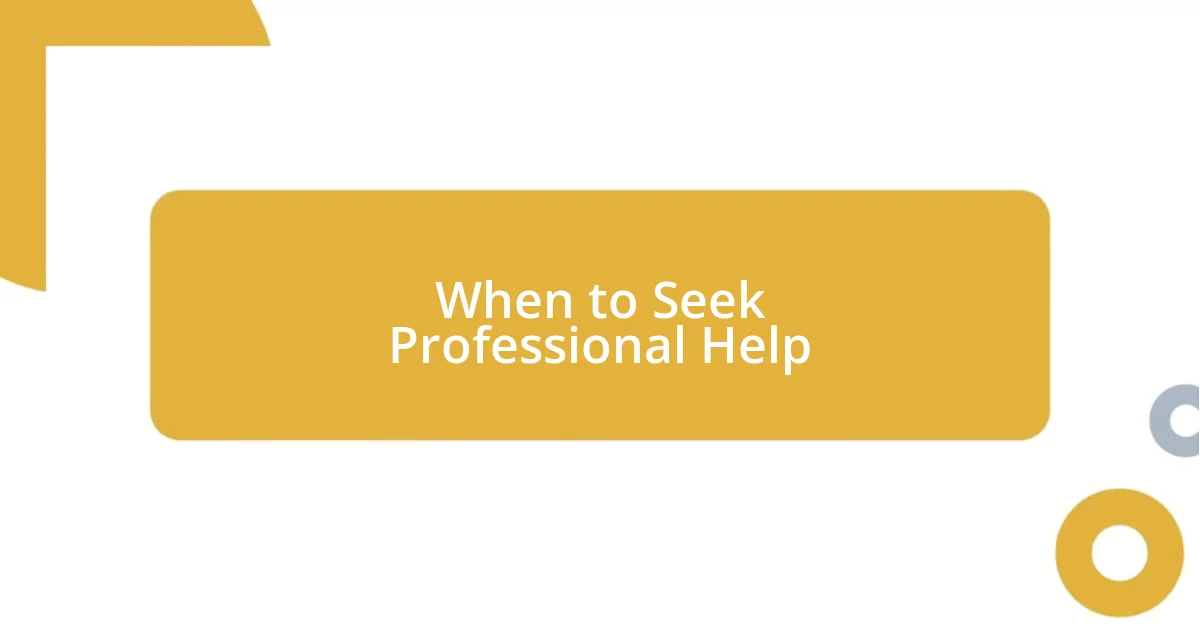
When to Seek Professional Help
When you’re facing a stain that just won’t budge, it might be time to consider professional help. I recall a situation with a vintage rug that I adored—an unexpected red wine spill marred its beautiful pattern. My attempts at cleaning it myself only seemed to make matters worse. Have you ever found yourself in a similar predicament, where DIY just isn’t cutting it? That’s when I realized that sometimes, it’s worth entrusting the experts.
There are also instances when the fabric or material is simply beyond my comfort zone. I once inherited a delicate lace dress that had a mystery stain on it. After doing some research, I discovered that treating lace incorrectly could ruin it. The thought of losing that precious piece to a failed DIY project made me seek a professional cleaner. Isn’t it interesting how the fear of damaging something valuable can prompt us to make wiser choices?
In general, if you’re unsure about the methods or products to use, seeking professional assistance is a smart move. I learned this lesson the hard way with my beloved leather jacket. After trying multiple products, I ended up with uneven spots that stood out like sore thumbs. The moment I took it to a professional, I felt a wave of relief; not only did they restore its original look, but I also gained a deeper understanding of how to care for leather. Have you ever felt like a weight was lifted off your shoulders? Sometimes, letting go of control can lead to the best outcome.










